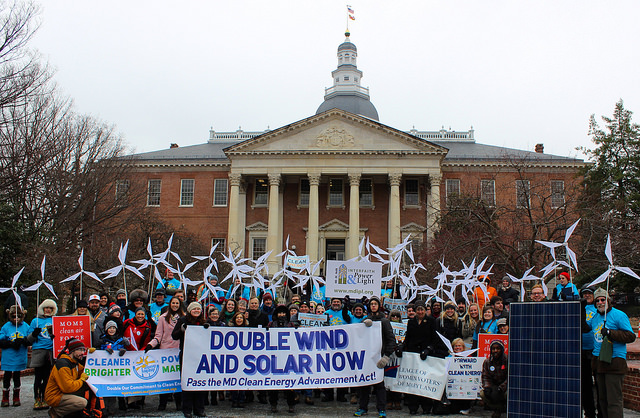Advocates applaud legislative champions on sea-level rise, say movement for solutions will only grow
RICHMOND — While the General Assembly came short of advancing landmark legislation to address rising sea levels and coastal flooding in Virginia this week, advocates are vowing to continue the fight and say they have significant momentum to pass the bill next year.
The bipartisan bill, called the Virginia Coastal Protection Act (HB 2205/SB 1428), came within one vote of passing in Senate committee and has gained key support from mayors, elected officials, and citizens in coastal Virginia and across the commonwealth.
The legislation is the first comprehensive state plan to tackle both the impacts and causes of growing flooding in Virginia’s Tidewater region. It would generate urgently needed funds to invest in coastal adaptation measures by having Virginia join a proven regional system for cutting carbon pollution. Carbon pollution is responsible for driving sea-level rise and increasingly severe weather in Virginia.
“We applaud Delegate Villanueva and Senator McEachin for their bipartisan leadership in introducing this bill, and we’ll be back next year to pass it,” said Dawone Robinson, Virginia Policy Director at the Chesapeake Climate Action Network. “While the General Assembly failed to make the right choice this year, there’s no question that the problem of flooding along our coast will only grow and so will the movement for solutions.”
In recent weeks, the Virginia Coastal Protection Act has gained broad and high-profile support, including from the mayors of Norfolk, Portsmouth and Virginia Beach, the Norfolk City Council, the Virginia Chapter of the American Association of Pediatrics, the Virginia Housing Coalition, and the editorial boards of the Virginian-Pilot and the Washington Post.
“The Virginia Coastal Protection Act was the best solution we had this year to combating climate change,” said Chelsea Harnish, policy and campaigns manager at the Virginia Conservation Network. “While it is unfortunate this bill did not pass, there shouldn’t be any doubt that we will be back again next year to push forward on this important issue.”
“We are grateful to have strong champions in the General Assembly who recognize that sea level rise is real, and is a problem that must be addressed,” said Mike Town, director of the Virginia League of Conservation Voters. “Sen. McEachin and Del. Villanueva have paved a bipartisan, win-win path to reducing climate change pollution, while creating jobs and protecting citizens on the front lines of rising seas.”
“It often takes more than one try to get legislation passed. This year we were able to inform legislators on this innovative approach,” said Glen Besa, Virginia Sierra Club Director. “Next year we hope we can get this bill passed.”
The Senate Agriculture, Conservation and Natural Resources Committee came just short of advancing the bill in an 8-7 vote last Thursday. It failed to advance today in the House Commerce and Labor Committee.
The Virginia Coastal Protection Act would cut carbon emissions and generate over $200 million annually by 2020 through a market-based system called the Regional Greenhouse Gas Initiative (RGGI). A full half of the funds would help Tidewater localities pay for flooding adaptation measures, while additional funds would support clean energy and energy efficiency programs statewide as well as economic development in Southwest Virginia. RGGI is already in place in nine states. Experts say that joining RGGI is also the most efficient and cost-effective way for Virginia to meet the federal Clean Power Plan.
Read a fact sheet on the Virginia Coastal Protection Act: http://chesapeakeclimate.org/wp-content/uploads/2015/01/CCAN-VA-Coastal-Protection-Act-Factsheet-PDF.pdf
Contact:
Dawone Robinson, 804-767-0372, dawone@chesapeakeclimate.org
Kelly Trout, 240-396-2022, kelly@chesapeakeclimate.org
###



